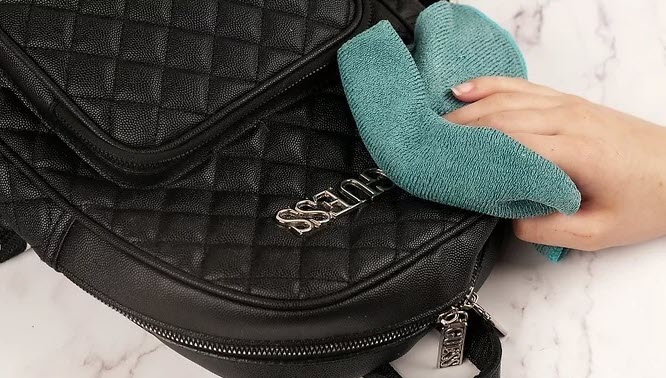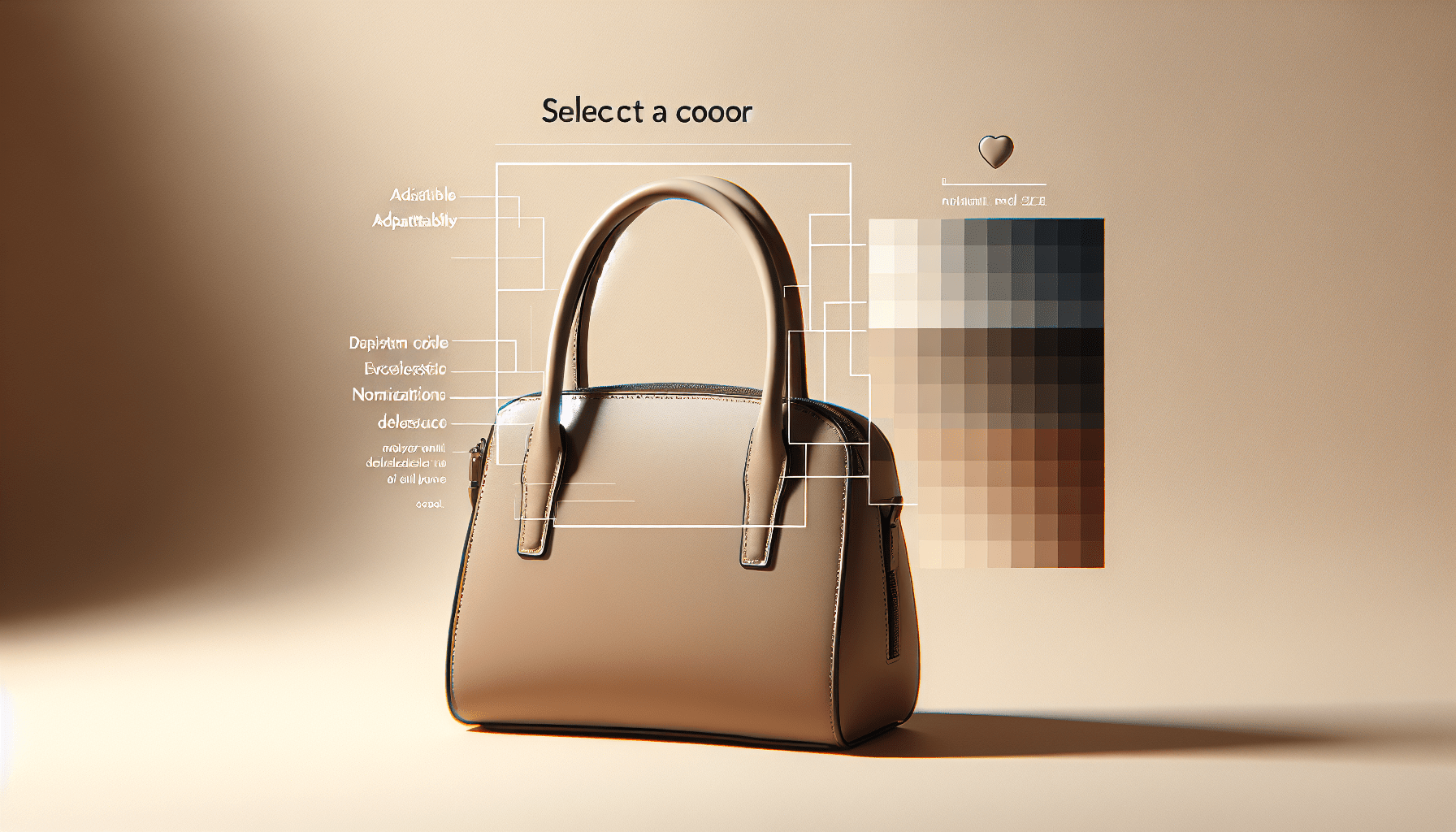How To Clean Leather Purse
Hey there! Do you have a beautiful leather purse that is in need of some TLC? Well, you’re in luck because I’m here to help you out! In this article, we will go over some simple and effective methods on how to clean your leather purse and have it looking as good as new. So grab your purse and get ready to give it some much-needed love and attention!
In our upcoming article, we will cover all the important steps and techniques you need to know to properly clean your leather purse. We will discuss the materials and products you will need, as well as some handy tips and tricks to help maintain the longevity of your purse. So if you’re tired of seeing scuffs and stains on your beloved leather purse, stay tuned and get ready to learn how to restore its original beauty. You won’t want to miss out on these valuable insights, so keep an eye out for our upcoming article on how to clean a leather purse!

How to Clean Leather Purse – Types of Leather Purse
Leather purses are timeless accessories that add sophistication and elegance to any outfit. However, like any other item made from leather, they require proper care and maintenance in order to stay in pristine condition. Knowing the different types of leather purses and the appropriate cleaning methods for each type is essential to ensure their longevity. Here are the most common types of leather purses:
Full-grain leather purse
Full-grain leather is the highest quality leather available, making it an ideal choice for those looking for durability and longevity. This type of leather is made from the top layer of the hide and retains the natural imperfections and grain of the animal. Full-grain leather purses develop a beautiful patina over time, enhancing their character and charm.
Top-grain leather purse
Top-grain leather is another popular choice for purses. It is made from the second-highest quality layer of the hide, with the top layer sanded or buffed to remove imperfections. While top-grain leather is not as durable as full-grain leather, it still offers good quality and can be more affordable.
Split-grain leather purse
Split-grain leather is made from the lower layers of the hide and is generally thinner and less durable than full-grain or top-grain leather. It is often used in the production of suede or nubuck purses, which have a soft and velvety texture. Split-grain leather purses require specialized cleaning methods to maintain their appearance and integrity.
Bonded leather purse
Bonded leather purses are made from leftover leather scraps that are bonded together with adhesives. While they may look similar to genuine leather, they are not as durable or long-lasting. Cleaning bonded leather purses should be done with caution to avoid damage to the material.
Now that you know the different types of leather purses, let’s move on to the steps for preparing and cleaning your leather purse.
How to Clean Leather Purse – Preparing for Cleaning
Before you begin the cleaning process, it’s important to gather the necessary supplies. You will need:
- Soft, lint-free cloths
- Mild soap or leather cleaner
- Leather conditioner
- Distilled water (for homemade cleaning solutions)
Once you have gathered your supplies, the next step is to identify the type of leather your purse is made from. This is important as different types of leather require different cleaning methods. Look for any tags or labels on the purse that indicate the type of leather used. If there are no specific instructions, it’s safest to assume that the purse is made from full-grain or top-grain leather.
You should also check for any care instructions provided by the manufacturer. Some leather purses may come with specific cleaning recommendations, and it’s important to follow them to avoid damaging the material.
How to Clean Leather Purse – Cleaning Methods
Now that you have prepared, let’s move on to the cleaning methods for leather purses. Depending on the type of leather and the level of dirt or stains, you can choose from the following methods:
Method 1: Wiping with a damp cloth
For light cleaning or routine maintenance, wiping your leather purse with a damp cloth is usually sufficient. Start by dampening a soft, lint-free cloth with distilled water. Make sure the cloth is not too wet, as excessive moisture can damage the leather. Gently wipe the surface of the purse, focusing on any areas that may be dirty. Avoid rubbing too vigorously as it can lead to discoloration or fading.
Method 2: Using leather cleaner
If your leather purse is heavily soiled or has stubborn stains, using a leather cleaner is recommended. Choose a mild, pH-neutral leather cleaner specifically designed for the type of leather your purse is made from. Apply a small amount of the cleaner onto a clean, soft cloth and gently rub it onto the surface of the purse in circular motions. Be sure to follow the instructions provided by the cleaner manufacturer and allow the purse to air dry after cleaning.
Method 3: Homemade cleaning solutions
For those who prefer natural cleaning solutions, there are homemade options that can be effective in cleaning leather purses. One simple solution is to mix equal parts distilled water and mild soap, such as Castile soap or baby shampoo. Dip a soft cloth into the solution and wring out any excess liquid. Gently clean the purse in circular motions, focusing on any stains or dirt. After cleaning, wipe away any residue with a clean, damp cloth and allow the purse to air dry.
Cleaning Stains and Spots
Stains and spots can be particularly troublesome to remove from leather purses. Here are some common types of stains and how to deal with them:
Removing ink stains
Ink stains are common and can be challenging to remove. The key to successfully removing ink stains is to address them as soon as possible. Blot the stain with a clean, dry cloth to absorb as much ink as possible. Avoid rubbing or scrubbing, as it can spread the ink further. Once most of the ink has been absorbed, apply a small amount of rubbing alcohol onto a cotton ball and gently dab the stained area. Continue dabbing until the stain starts to lift. Afterward, clean the area with a mild soap and water solution and allow it to air dry.
Treating oil or grease stains
Oil or grease stains can be unsightly on leather purses. To remove these stains, start by absorbing as much oil as possible with a clean cloth or paper towel. Avoid applying water directly to the stain, as it can spread the oil. Instead, sprinkle a small amount of cornstarch or baby powder onto the stained area and let it sit for a few hours to absorb the oil. Afterward, gently brush off the powder and wipe away any residue with a clean, damp cloth.
Dealing with water stains
Water stains can occur when leather comes into contact with liquid. To remove water stains, start by gently blotting the area with a clean, dry cloth to absorb as much moisture as possible. Allow the leather to air dry naturally, avoiding the use of heat sources such as hair dryers. Once dry, gently buff the stained area with a soft cloth to restore its shine.
Removing mold or mildew
If you notice mold or mildew on your leather purse, it’s important to address it immediately to prevent further damage. Start by gently brushing off any visible mold or mildew spores with a soft cloth. Next, mix equal parts distilled water and vinegar and dampen a clean cloth with the solution. Gently wipe the affected areas, ensuring that the entire area is covered. Allow the vinegar solution to sit for a few minutes before wiping it away with a clean, damp cloth. Finish by thoroughly drying the purse and applying a leather conditioner to restore its moisture and prevent future mold growth.
Conditioning and Moisturizing Leather
Regular conditioning and moisturizing are essential for maintaining the suppleness and health of leather purses. Here are some methods to keep your leather purse looking its best:
Applying leather conditioner
Leather conditioners are specially formulated products that nourish and protect leather. They help to replenish the natural oils that leather loses over time, preventing it from drying out and cracking. Before applying a leather conditioner, make sure the purse is clean and dry. Apply a small amount of conditioner onto a soft cloth and gently rub it into the leather in circular motions. Pay extra attention to areas that are prone to dryness, such as handles and corners. Allow the conditioner to absorb into the leather for a few minutes before wiping away any excess with a clean cloth.
Using natural oils
Alternatively, you can use natural oils to moisturize your leather purse. Olive oil, coconut oil, and mink oil are commonly recommended for moisturizing leather. However, it’s important to note that certain oils, such as vegetable oil, can darken or stain leather, so it’s best to avoid them. To apply natural oils, start by cleaning the purse and removing any dirt or stains. Apply a small amount of oil onto a soft cloth and gently rub it into the leather in circular motions. Allow the oil to absorb for a few minutes before wiping away any excess with a clean cloth.
Preventing leather from drying out
To prevent your leather purse from drying out, it’s important to store it in a cool and dry place, away from direct sunlight or heat sources. Exposure to sunlight and heat can cause leather to fade, crack, or become brittle. Additionally, avoid using harsh chemicals or cleaning products that can strip the natural oils from the leather. Regularly conditioning and moisturizing your leather purse will also help maintain its suppleness and prevent drying.
How to Clean Leather Purse – Polishing and Buffing
Giving your leather purse a gentle polish and buff will help restore its shine and luster. Follow these steps to achieve a polished finish:
Buffing leather surface
Using a soft cloth or a horsehair brush, gently buff the entire surface of the purse in a circular motion. This will help to remove any surface dirt or dust and revive the leather’s natural sheen. Be careful not to rub too vigorously, as it can cause friction and damage the leather.
Applying leather polish
Once the purse has been buffed, you can apply a leather polish to enhance its shine. Choose a colorless or color-matched leather polish that is specifically designed for your type of leather. Apply a small amount of polish onto a soft cloth and gently buff it into the leather using circular motions. Make sure to cover the entire surface of the purse evenly. Allow the polish to dry completely before touching or using the purse.
How to Clean Leather Purse – Final touch-ups
After polishing, inspect the purse for any remaining dirt or scratches. Use a soft cloth or an eraser specifically designed for leather to gently rub away any stubborn marks or scuffs. This will give your purse a final touch-up and leave it looking clean and polished.
Dealing with Tough Stains and Odors
While regular cleaning and maintenance can help prevent most stains and odors, there may be times when you encounter more stubborn problems. Here are some tips to help you tackle tough stains and eliminate unpleasant odors:
Removing stubborn stains
If you come across a stubborn stain that cannot be removed with regular cleaning methods, it’s best to consult a professional leather cleaner. They have the expertise and specialized products to safely and effectively remove difficult stains without causing further damage to the leather.
Eliminating unpleasant odors
Unpleasant odors can sometimes develop in leather purses, particularly if they have been exposed to moisture or stored in damp conditions. To remove odors, start by thoroughly cleaning the purse following the appropriate cleaning methods. Once the purse is clean and dry, you can place a small container of baking soda inside for a few days to absorb any lingering smells. Alternatively, you can use a specialized leather odor remover or consult a professional for further assistance.
Storage and Maintenance Tips
Proper storage and maintenance are crucial for preserving the lifespan and appearance of your leather purse. Here are some tips to keep in mind:
Storing in a dust bag
When not in use, store your leather purse in a breathable dust bag or a soft cotton pillowcase to protect it from dust and light. Avoid storing it in plastic bags or airtight containers, as this can cause moisture buildup and promote the growth of mold or mildew.
Protecting from direct sunlight
Direct sunlight can cause leather to fade and become discolored. Keep your purse away from windows or other sources of direct sunlight when storing or using it.
Avoiding contact with water
Leather is not waterproof and can be damaged by water. Avoid using your leather purse in rainy or wet conditions, and always wipe away any moisture immediately to prevent water stains. If your purse does get wet, allow it to air dry naturally and apply a leather conditioner to restore its moisture and prevent drying.

Repairing Leather Damage
Over time, your leather purse may develop scratches, scuffs, or other damage. While smaller imperfections can add character and charm to the purse, larger or more noticeable damage may require repairing. Here are some common repair techniques for leather purses:
Fixing scratches or scuffs
Minor scratches or scuffs can often be buffed out using a soft cloth or an eraser specifically designed for leather. Gently rub the affected area in a circular motion, gradually decreasing the pressure as the scratch or scuff fades. If the damage is more severe or if you’re unsure about repairing it yourself, it’s best to consult a professional leather repair service.
Mending rips or tears
For larger rips or tears in your leather purse, it’s recommended to seek professional help for repair. A skilled leather repair specialist can patch or stitch the damaged area, ensuring that the repair is seamless and durable.
Color touch-ups
If your leather purse has lost its color or has areas of discoloration, you can touch it up using a leather colorant or leather dye. It’s important to choose a colorant or dye that matches the original color of your purse. Apply the colorant or dye following the instructions provided, taking care to blend it evenly with the surrounding leather. Allow the colorant or dye to dry completely before using or handling the purse.
Conclusion
Knowing how to clean leather purse is key to preserving its beauty and longevity. By following the appropriate cleaning methods, conditioning and moisturizing the leather, avoiding harsh chemicals or excessive moisture, and storing it properly, you can extend the lifespan of your leather purse and enjoy its timeless elegance for years to come. Remember to always check the type of leather your purse is made from and follow any specific care instructions provided by the manufacturer. With these tips and a little bit of TLC, your leather purse will continue to be a cherished accessory that adds style and sophistication to your wardrobe.





